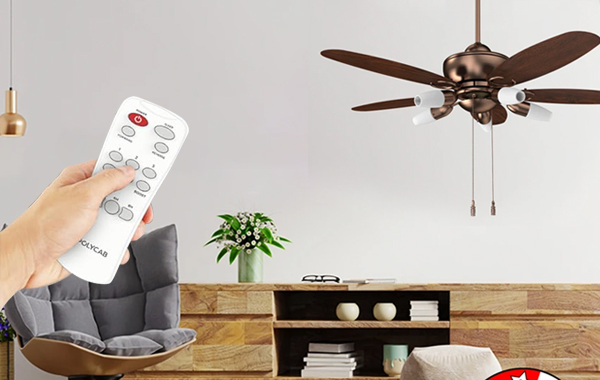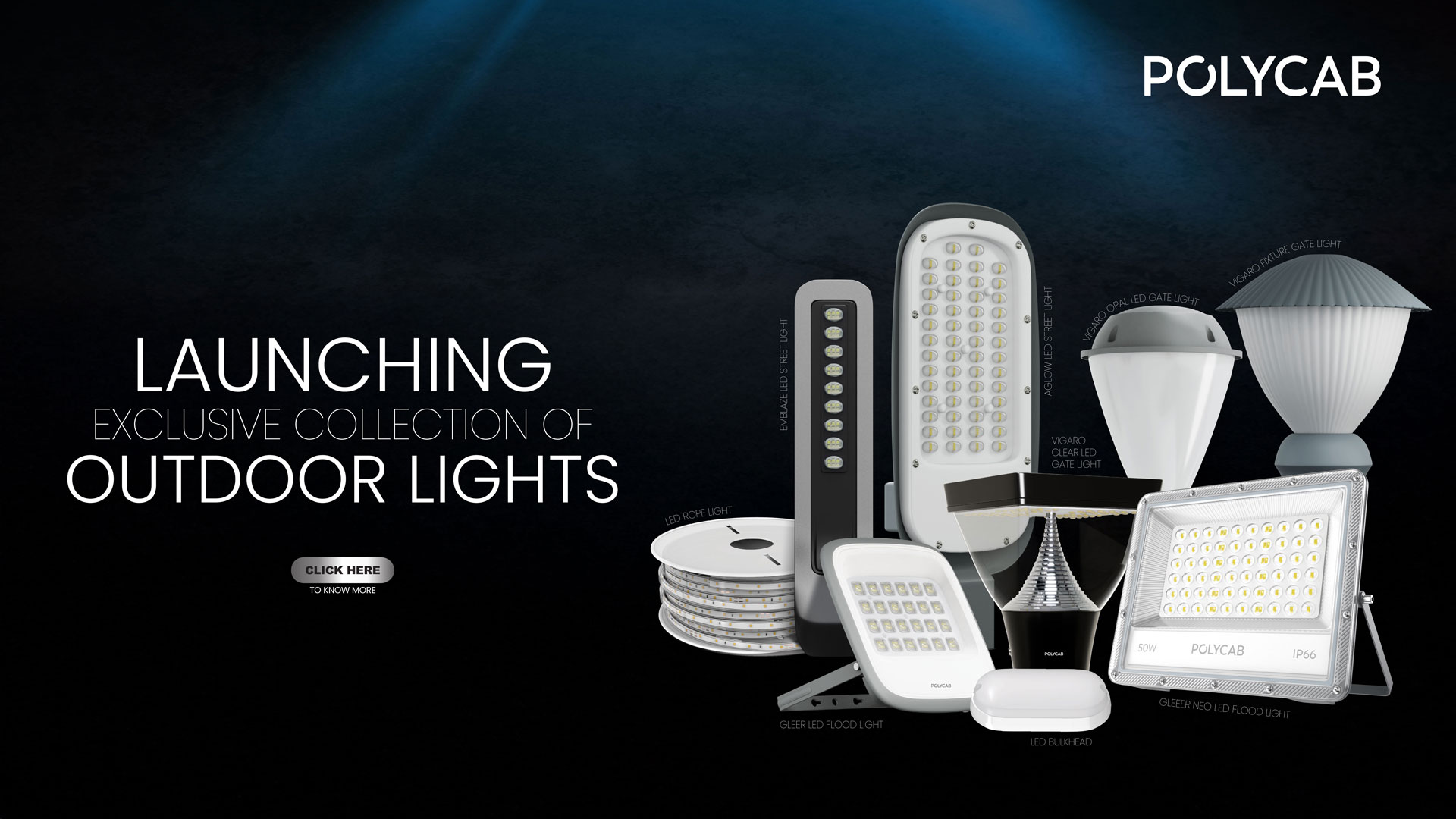How BLDC Fans Help Reduce Electricity Bills Without Compromising Cool

- April 13, 2025
- No comments yet
How BLDC Fans Help Reduce Electricity Bills Without Compromising Cool
Imagine a hot summer afternoon, the fan spinning fast above you and your electric meter spinning just as fast. Rising electricity bills are a concern for many households nationwide. Cooling appliances such as fans and air conditioners make a significant contribution to residential electricity consumption. However, with the emergence of technology and a growing focus on sustainability, BLDC fans have become the modern solution for sustainable cooling without breaking the bank. They offer higher cooling efficiency and convenience, radiating cool air without draining resources. This article will walk you through what BLDC fans are, the BLDC motor technology, and how it helps to reduce electricity bills in your home.
Understanding BLDC Fans and Their Benefits
Brushless Direct Current, also known as BLDC fans, have rapidly gained popularity in the past few years. Traditional ceiling fans rely on AC induction motors, while BLDC fans use brushless DC motors that can be controlled electronically, resulting in significantly improved performance and energy savings.
The prominent benefits of BLDC fans are;
- Lower power consumption compared to traditional fans.
- Equipped with Smart features such as timers and sleep modes.
- Eco-friendly fans that help reduce the carbon footprint, contributing to a greener environment.
- A lightweight and sleek design that matches the modern aesthetics of any home interior.
- These energy-efficient fans can be integrated with smart home automation systems.
What Are BLDC Fans? A Quick Overview
A BLDC fan consists of a permanent magnet that works as a rotor to produce magnetic fields, thus generating little to no heat. It eliminates the need for brushes found in traditional motors. The electronic controllers ensure the current flow in motor windings, resulting in reduced friction, wear, and tear. It leads to quiet operations, improved efficiency, and a longer lifespan, providing seamless cooling throughout the room.
How BLDC Fans Help in Reducing Electricity Bills
A normal ceiling fan has a power consumption of approximately 70-80 Watts. However, BLDC fans, with their power-saving mechanism, can consume only 25-30 Watts of power, thus leading to a significant difference in electricity consumption.
- Considering the fact that a ceiling fan in a typical Indian household runs for 10 hours a day, consuming 75 Watts.
- So, the monthly consumption becomes: 75 Watts x 10 hours x 30 days = 22,500 watt hours or 22.5 kWh.
- At an average price of Rs 7 per kilowatt-hour, the estimated monthly cost becomes: 22.5 kWh x 7 = Rs 158
- However, a BLDC fan consumes 30 Watts of power for running 10 hours a day.
- The average monthly consumption of electricity for running a BLDC fan is: 30 watts x 10 hours x 30 days = 9,000 watt-hours or 9 kWh.
- At Rs 7 per unit, the estimated monthly electricity bill becomes: 9 x 7= Rs. 63.
Moreover, these energy-efficient fans perform equally well in terms of maintaining airflow and cooling efficiency. For a household with multiple BLDC fans, these small savings in electricity bills can add up to a significant amount over time.
The Technology Behind BLDC Fans
BLDC fans use permanent magnets to effectively convert AC to DC power, resulting in maximum energy being used for power generation. Unlike traditional motors, the lack of brushes in a BLDC fan ensures there is no energy loss in the form of heat caused by friction. The electronic controller controls the speed and direction of the fan, ensuring consistent performance.
The presence of permanent magnets reduces magnetic losses and improves efficiency. The microprocessors in these energy-saving fans enable features such as sleep modes, timers, and remote operations. The advantage of brushless motor design is evident in the low operational noise, reduced maintenance, and extended product lifespan.
Comparing BLDC Fans with Traditional Fans: Electricity Cost Savings
| Feature | BLDC Fans | Traditional Fans |
| Power Consumption | 25-35 Watts | 70-90 Watts |
| Motor Type | Brushless DC | AC induction |
| Noise Level | Low to zero | Moderate to high |
| Smart speed control | Smart controller | Capacitor-based |
| Annual Energy consumption (At 10 hours per day) | 50-125 kWh | 300-350 kWh |
| Average cost at ₹7/ unit | ₹350-₹875/ yearly(approx) | ₹2100-₹2450 yearly (approx) |
Key Features of BLDC Fans That Contribute to Lower Bills
The high efficiency of BLDC fans is driven by a range of smart, innovative features designed to optimise power consumption without compromising performance:
- Low Energy Consumption: Perhaps, this is the biggest benefit of using these energy-efficient fans. As they operate within a 25-35-watt power range, BLDC fans drastically reduce the energy consumed in maintaining a cool home environment.
- Quiet Operations: The lack of brushes in BLDC fans ensures these fans function quietly without causing any disturbance, resulting in a peaceful environment for resting in the room.
- No Motor Overheating: Since BLDC fans do not contain electromagnets to generate magnetic fields, there is no excessive heat generated in these eco-friendly fans, thus making optimum use of electrical power.
- Low Maintenance Efforts: A BLDC fan has fewer moving parts. The advanced motor technology in these fans requires little maintenance over time.
Long-Term Benefits of Using BLDC Fans in Your Home or Office
While reduced electricity bills are a significant advantage of these energy-efficient fans, there are several other benefits of having a BLDC motor technology fan.
- Smart Speed Control: BLDC fans are equipped with smart speed control mechanisms to optimize fan usage in residential or commercial environments. You can also control the fan’s speed using smartphone apps, thus bringing convenience to your fingertips.
- Sleep and Timer Modes: The BLDC motor technology is also equipped with timers and auto-sleep modes to cut down its unnecessary usage, especially at night or when no one is available, thus making them low-energy consumption fans.
- Eco-friendly Choice: These energy-efficient fans help reduce the carbon footprint of your residential or office space, contributing to a greener environment and sustainable living.
- Long Durability: BLDC fans are designed to last longer than traditional induction-powered fans. The minimum number of parts and lack of brushes reduce wear and tear, thus resulting in fewer breakdowns and longer shelf life.
How BLDC Fans Improve Indoor Air Quality Without Excess Energy Use
While cooling the home environment is essential, air circulation and ventilation play a crucial role in maintaining the indoor air quality. Home ventilation fans, especially ceiling fans, help move warm air, reduce humidity, and prevent the buildup of pollutants indoors.
BLDC fans enable this continuous circulation without guzzling power, making them ideal for:
- Bedrooms and living spaces that require constant ventilation.
- Kitchens where airflow is crucial to manage cooking odours, fumes, and heat
- Offices and commercial areas that aim for comfort and cost efficiency.
By maintaining consistent airflow, BLDC fans help avoid the reliance on air conditioning, which consumes significantly more energy. This not only helps reduce electricity consumption but also promotes sustainable cooling in the long run.
Conclusion
Ditch the traditional power-hungry fans and embrace modern, eco-friendly fans built with smart, energy-saving capabilities. The high savings on electricity bills, combined with low maintenance and extended durability, make them worth the investment. Moreover, their working principle promotes sustainable living. BLDC fans are not just cooling appliances but an innovative catalyst fuelling change and having a significant impact on a greener future.
RECENT POSTS
- Switch Up for Diwali: The Benefits of Upgrading to Modular Switches from Polycab
- Diwali Lighting Ideas: 5 Ways to Use LED Strip Lights for a Festive Home Décor
- Upgrade Your Home with Polycab Remote Controlled Fans This Diwali
- 5 Hacks to use your Pedestal Fan for additional cooling
- Launching Polycab Super ROI Fans - Learn More About Super ROI Fans
 Fans
Fans
 Wires
Wires
 Lighting
Lighting
 Switches and Accessories
Switches and Accessories
 Water Heaters
Water Heaters
 Switchgear
Switchgear
 Polycab Home Advisors
Polycab Home Advisors
 Cables by Application
Cables by Application Cables by Standards
Cables by Standards Cables by Type
Cables by Type Renewables
Renewables Corporate
Corporate News and Media
News and Media Life at Polycab
Life at Polycab Contact Us
Contact Us Financial & Corporate Information
Financial & Corporate Information Annual Reports
Annual Reports Shareholder’s Information
Shareholder’s Information Credit Ratings
Credit Ratings Latest Updates
Latest Updates Notices
Notices Corporate Governance
Corporate Governance Corporate Action History
Corporate Action History Investors Contacts
Investors Contacts Disclosures under Regulation 46
Disclosures under Regulation 46


